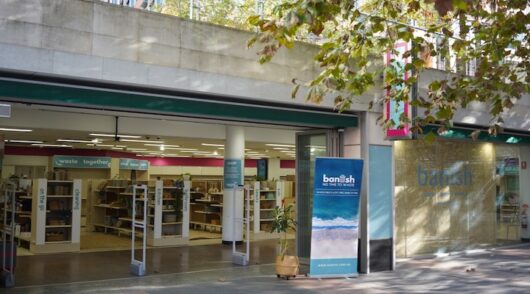Customer Relationship Management (CRM) has long been the core of customer service, but for many years it was overlooked and misunderstood.
The term CRM was introduced in the 1990s, but was first known as ‘database marketing’ in the 1980s.
“In the early 90s, CRM was painted with a pretty bad brush, companies didn’t realise the value of the what it could do,” says Stephen Duncan, product manager retail and CRM at Pronto software. “It was seen as cumbersome and very labour intensive.”
But as technology has advanced, so too has CRM, and retailers are beginning to realise its benefits and reap the rewards.
Duncan believes the future of retailing lies in CRM, and retailers having a strong omni-channel presence.
“I see CRM starting to become more of a core competency rather than a fringe offering. CRM is part of the backbone for omni-channel because that’s where you are capturing the data about the customer,” says Duncan.
Today, companies can recognise, track, and store customer’s shopping patterns and spending behaviours, allowing them to target market customers specifically.
Loyalty programs have seen a boom over the past decade, with Flybuys still one of the biggest since it launched in 1994.
“Anybody can sell stuff, anybody can fine tune their supply chain, bring in new products, and decrease their costs. But if retailers don’t have a loyalty program, or are not reaching out to their customers specifically, then another retailer will, and they’ll be left behind,” says Duncan.
“With a more targeted focus, more people will come into stores and spend more money. If you really want to keep up with the market today, then you have to know your customers,” he adds.
Smartphone technology has helped advance target marketing, with retailers now able to provide instant offers to customers with just the click of a button.
Duncan believes The Athlete’s Foot has come a long way thanks to it’s CRM data, and may not be too far behind bigger name retailers, such as David Jones, Woolworths, Target, and Big W.
“They’ve had organic growth in an industry that has had a big downturn, because they’ve pushed their service to a new level – their foot analysis allows them to sell the right shoe to a customer, as opposed to saying, ‘here’s a coupon to get 10 per cent off’, which anybody can do.”
Smartphones have also helped boost one of the latest trends in target marketing – location tracking.
“If someone comes into the shopping centre and they have their location tracking set up for Village Cinemas, then, if Village have profiled that customer, they can potentially shoot them through some sort of correspondence to offer them a relevant movie voucher.
“The backbone to location tracking is once again CRM, because that is how the customer’s data and profile has been captured,” said Duncan.

Clienting
For David Burton, CRM product director at Epicor Software, the instore service of ‘clienteling’ is leading the way in CRM.
The ‘little black book’ sales assistants once had, has turned into an instore tablet.
Customer information is placed on a centralised CRM system that can be accessed on a tablet device while the customer is instore, helping retailers understand consumers’ past purchases and previous behaviours on the spot.
“With the wealth of information stored in the CRM database, sales associates are realising the value of having it all available at their fingertips, much more than they could ever manually write in their clienteling books,” Burton said.
With customer data readily available, Burton believes retailers will see a fundamental change in how business is transacted.
“Customers will start expecting a new level of service that can’t be provided without every associate having a tablet.”
When it comes to social media in the world of CRM, it still remains a two way street.
For the most part, social media assists retailers with profiling their consumers, however, how to turn online information from sites such Facebook, Twitter, and Pinterest into sales still remains a challenge.
“Nobody that I’m aware of has completely resolved this [social media] challenge, but many retailers are dabbling in it,” said Burton.
Fashion retailer, Jeanswest has 1.5 million members in its loyalty program, and according to its CRM and online manager, Sarah Hayden, it has one of the biggest programs in Australia for a single branded retailer.
Hayden attributes the success of Jeanswest’s loyalty program to its back to basics approach.
“If you get into what is real CRM, it doesn’t have to be expensive, it’s about how you view the customer experience and putting the customer experience first,” Hayden says.
A combination of incentives by the brand has helped it grow its loyalty membership.
“In one instance, instead of recognising the sales persons’ work for a huge sale, we also asked ‘how can we recognise this from a customer point of view’?
“Whether it be a follow up call or email, it’s just those little touches that make a difference,” she adds.
Missing out
Australia is said to rank in the top end of countries using CRM systems, but despite having the technology, retailers are still not optimising its benefits.
“We have adopted the smartphones, the understanding of the CRM technology, but actually implementing it is probably a bit slower,” Duncan said.
Hayden says when it comes to who is doing it well, it’s the bigger countries ‘because they can’.
“We just don’t have the numbers that the US and the UK have to make it really cost efficient and to be able to take advantage of all the technology that is available,” she says.
“UK-based retailers such as Thomas Pink and Burberry are doing a great job of leveraging the data in their CRM databases to segment and analyse their customers and drive incremental revenues,” said Burton, who also believes Foot Locker, Casual Male XL, and Cole Haan are among the top retailers leveraging CRM in the US.
Surprisingly, Norway has been named as an emerging leader in CRM, thanks to its ‘less inhibited’ approach to technology.
“Norway was the first country to adopt NFC (Near Field Communication) and smartphones by using paperless tickets at its train stations. I think that then followed through in retail because they were less inhibited to adapt to new technology.”
Safety in numbers
Duncan believes if more Australian retailers were using CRM technology then the avalanche of adoption would be faster.
“The more retailers that do it, the more consumers will too.”
A common CRM mistake made by companies is investing money in advanced systems but failing to invest in experienced users that are able to leverage the data into sales.
“Sometimes a company will hire one manager and refuse to hire additional analysts in order to save money, so the manager spends their whole time focused on data hygiene instead of strategic CRM initiatives,” said Burton.
Instead of doing this, Burton says the task could be delegated to third party resources so the CRM manager can focus on CRM.
Retailers also need to remember that when it comes to loyalty programs, the system needs to be customer led rather than technology led.
Poorly planned systems or programs that are tested for only a short period of time lead many retailers to miss out on potential revenue.
But the speed to adapt to new technology is not always the most important part of CRM.
“There are so many opportunities and there is so much technology available out there that everyone jumps on things because it’s available.
“You may have this great new app, but its actually not what the customer wants,” Hayden said.
“It’s more about who your customer is and what it is they really want.”
* This feature first appeared in the October/November 2012 edition of Inside Retail Magazine. For more stories like this, subscribe to Inside Retail Magazine’s bi-monthly print edition here.





